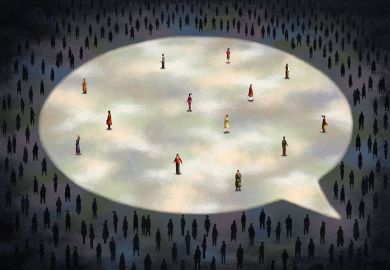A History of Ambiguity is unambiguously wonderful – the sort of book I thought no one could write any more. With 469 pages and 1,407 footnotes, Anthony Ossa-Richardson’s book is an epic love song to scholarship – he describes a short passage of criticism by William Empson as a “poem of ideas”.
And it’s funny! Scholar-funny sometimes, sure: bad jokes, amusing subheadings, pushing words to their academic limit (you can chase intention like a hunter “pursues a hare”, but its “leporinity” means you won’t catch it). But not just that, it’s well written, actually witty and intelligently funny. It reminds you that, throughout, Ossa-Richardson has the big picture in mind.
And that’s important. Sometimes humanities scholarship can fall down a rabbit hole into wonderlands of charming detail, irrelevant to what’s at hand. Ossa-Richardson’s entry to the warren is Empson’s Seven Types of Ambiguity, a canonical and foundational text of literary criticism and theory from 1930, and this focus holds the whole tea party together. By analysing the forms of Western thought that deal with ambiguity (philosophy, law, theology, criticism), he uncovers a recurring pattern. Ambiguity is either taken as artificial, a form of elegant wit or intentional deceit; or it is seen as inspired, in the sense that, especially for scripture, multiple meanings emerge for new readers over time.
In following this, A History of Ambiguity moves with assured and careful leaps over an astonishing chronological and intellectual range. On every page names from the past jostle as he traces the paths that ideas take from scholar to scholar – famous (Aristotle, Augustine) or obscure (Lady Victoria Welby, Karl Abel). New conjunctions of thought spring to life, old ones (“only frozen in carbonite”, his metaphor) re-emerge from hibernation. There is new insight on every page.
As in any epic, there are subplots: is Ossa-Richardson suggesting, say, that Empson’s concept of ambiguity is oddly religious (the second volume of John Haffenden’s excellent biography of Empson is called Against the Christians, so you can see this might be controversial)? There are repeated motifs, such as two armies clashing over a complexity of interpretation. And there is room for disagreement: where would we be if academics couldn’t fight over footnotes on Aristotle? Kudos, too, to the editor at Princeton University Press who gave Ossa-Richardson a word count that allowed him to be so deeply scholarly as well as witty.
Perhaps because of its brilliance, the book is caught in its own fascinating ambiguities. The author bemoans “the modern academic study of literature…transformed…into historical scholarship, surfeited with evidence and footnotes…all interdisciplinary syntheses and white gloves”, yet his book performs – so gracefully, so fascinatingly – precisely these syntheses and this scholarship. He says he wants to show Empson’s originality, yet is constantly finding earlier typologies of ambiguity (such as from Augustine, Sanctius, Boyle and Salmerón) – the roots of Empson’s ideas stretch back through the Western scholarly tradition. And in a pointed afterword, Ossa-Richardson’s own ambiguities come to the fore. There is no shape to the history of ambiguity, but rather the book “is the history of a mind that has found too many past answers and will not choose between them”. This is right. Poetry, even the poetry of literary scholarship, is allowed multiple meanings.
Robert Eaglestone is professor of contemporary literature and thought at Royal Holloway, University of London.
A History of Ambiguity
By Anthony Ossa-Richardson
Princeton University Press
488pp, £40.00
ISBN 9780691167954
Published 29 May 2019
后记
Print headline: Hare-brained and full of insights




